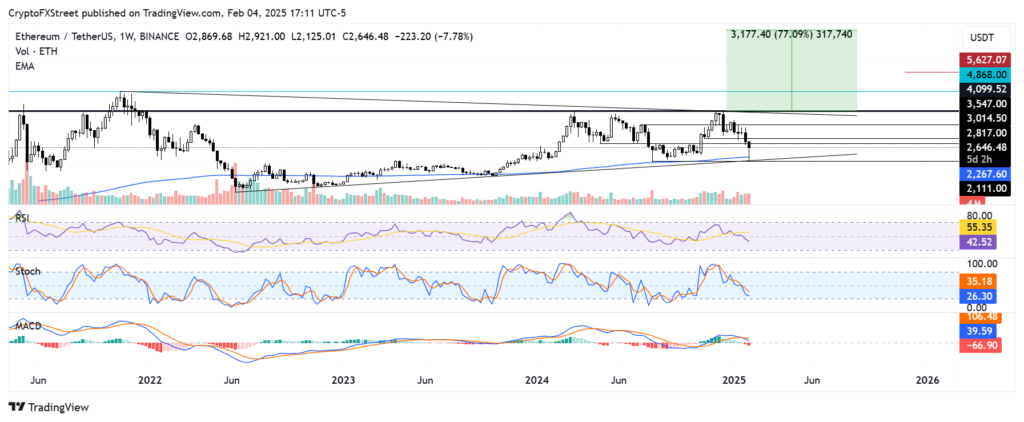Ethereum (ETH) slipped below $2,800, reacting to the recent increase in its network gas limit beyond 30 million units. This adjustment, aimed at enhancing transaction capacity, has sparked mixed reactions in the market, with concerns over potential network strain outweighing initial optimism about improved efficiency.
The gas limit hike is designed to allow more transactions per block, theoretically reducing fees and congestion. However, investors are wary that this could lead to greater centralization risks, as larger blocks may favor more powerful nodes, potentially impacting network security and decentralization.

Source – FXStreet
At the same time, broader market conditions have contributed to Ethereum’s decline. Weaker sentiment across the crypto space, driven by macroeconomic uncertainties and regulatory pressures, has added downward pressure on ETH, with traders closely watching support levels around the $2,700 mark.
Despite the pullback, some analysts remain cautiously optimistic, viewing the gas limit increase as a long-term positive for network scalability. However, near-term volatility is expected as the market adjusts to the new dynamics and evaluates the real-world impact on transaction costs and network performance.
Technical indicators suggest that Ethereum faces key resistance around the $2,800 level, with bearish momentum prevailing unless strong buying support emerges. A break below critical support zones could trigger further declines, while recovery efforts will depend on improved sentiment and network stability.
Looking ahead, investors will monitor both on-chain metrics and macroeconomic signals to gauge Ethereum’s next moves. The balance between technical improvements and market confidence will be crucial in determining whether ETH can regain its recent highs or face extended consolidation.
















